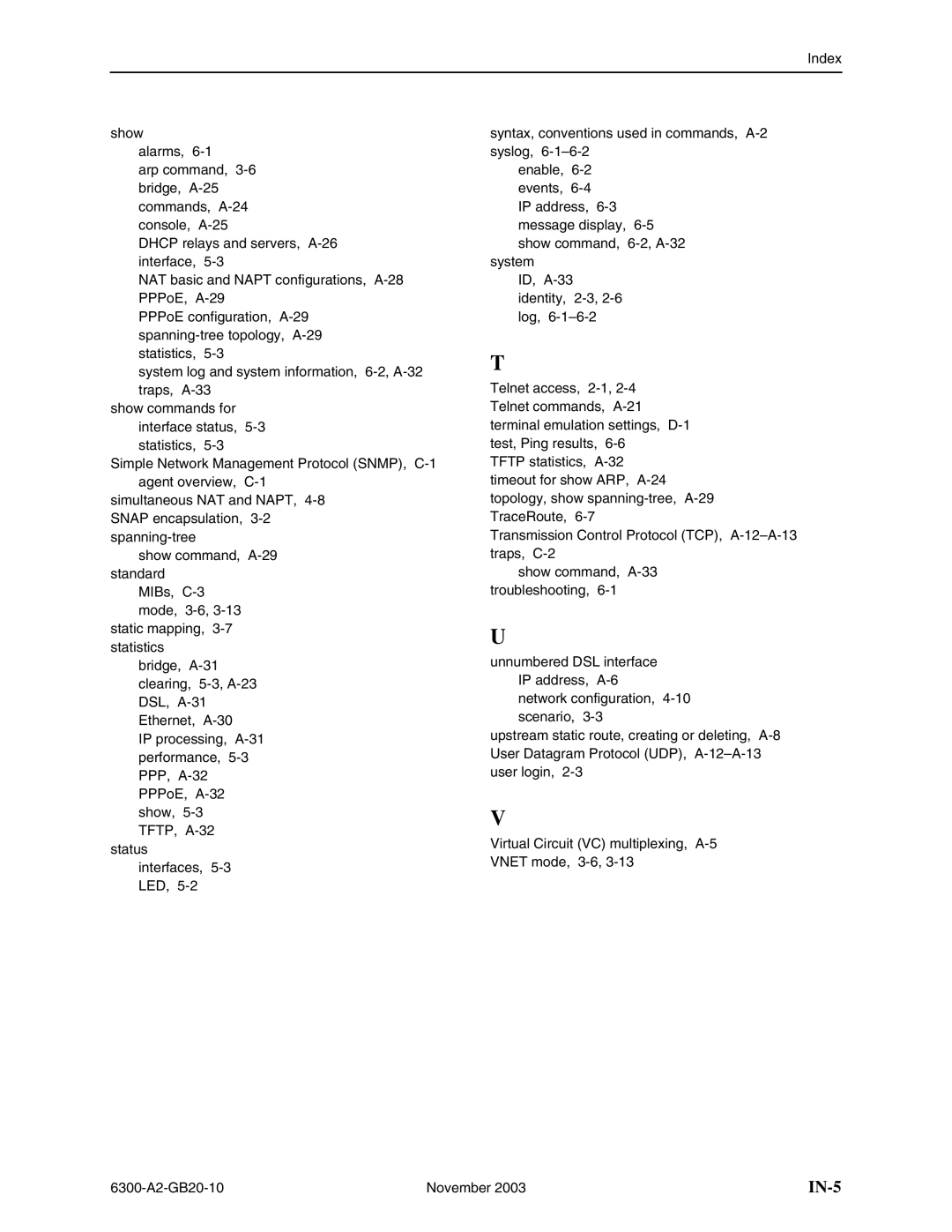Index
show
alarms,
arp command,
DHCP relays and servers,
NAT basic and NAPT configurations,
PPPoE configuration,
system log and system information,
show commands for interface status,
Simple Network Management Protocol (SNMP),
simultaneous NAT and NAPT,
show command,
MIBs,
static mapping,
bridge,
IP processing,
TFTP,
interfaces,
syntax, conventions used in commands,
enable,
system
ID,
T
Telnet access,
TFTP statistics,
Transmission Control Protocol (TCP),
show command,
U
unnumbered DSL interface IP address,
network configuration,
upstream static route, creating or deleting,
V
Virtual Circuit (VC) multiplexing,
VNET mode,
November 2003 |
|
